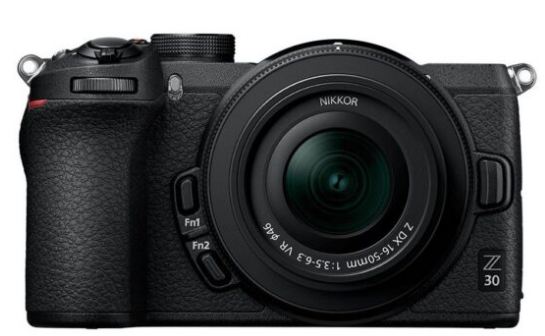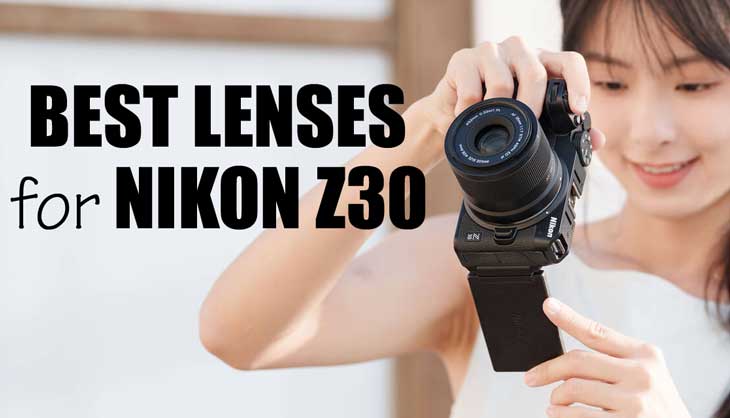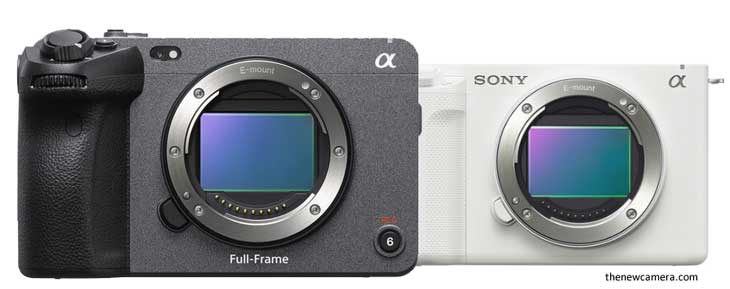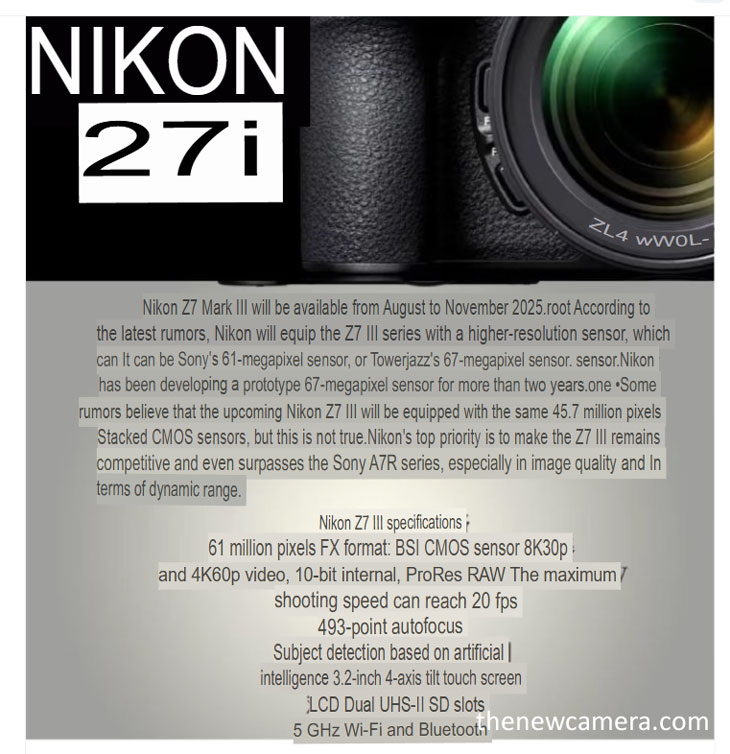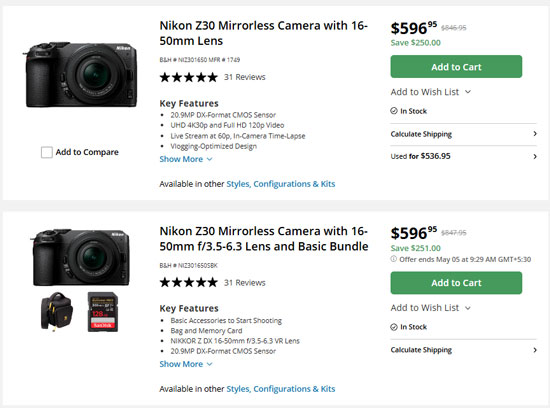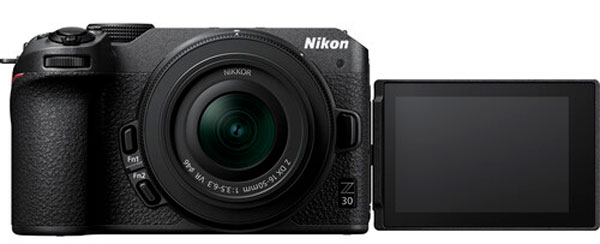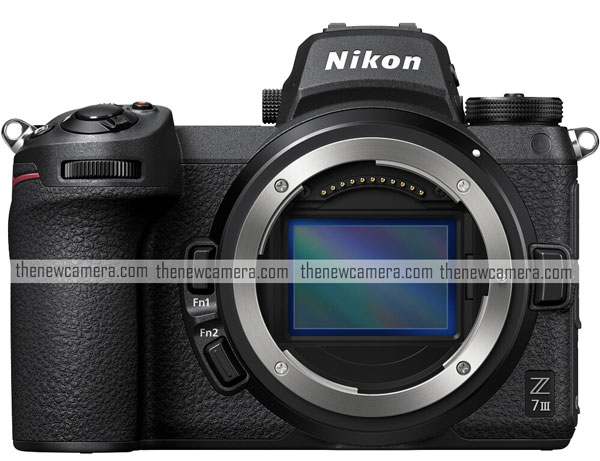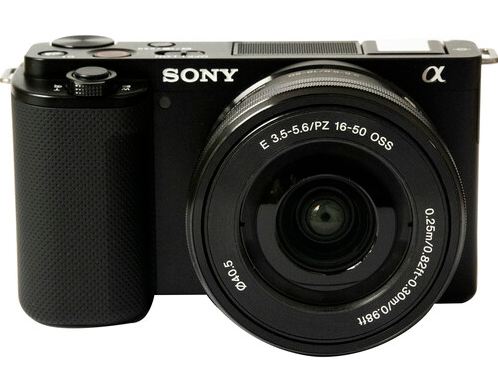
Sony ZV10 is a powerhouse camera for Vloggers and photographers as well and content creators. The camera features a 24-megapixel APS-C BSI CMOS sensor and the ability to record 4K video, a lot of new features, along with E-mount support. But to unlock its full potential, you have to use the right lens when you are shooting cinematic vlogs or portraits, or vibrant travel photos. Choosing the best lenses for the Sony ZV10 in 2025 will make a real difference. In this guide, we have tested out several lenses and being using the ZV10 camera for more than 2 years we have selected the top best lenses for every use case from wide-angle prime lenses to versatile zoom lens with the detailed review and some sort of comparison tables we have below, you will get the best available lens for the ZV-E10 camera.
Table of Contents
Why does the right lens matter?
Best prime lens for Sony ZV-R10
Best zoom lens for Sony ZV-E10
Best budget lenses for Sony ZV-E10
Comparison table
How to choose a lens for your Sony ZV-E10
FAQ
Why does the right lens matter?
Sony ZV-E10 camera and its successor, Sony ZV10 II, are designed for content creators, specifically those who want the highest quality output possible without sacrificing quality. The Sony 24-megapixel BSI CMOS sensor delivers excellent, crisp, and clear oversampled 4K video footage, but the lens that you pair with the camera determines the overall output of your content. A wide-angle prime lens is ideal for vlogging with the camera, and a versatile zoom lens covers multiple scenarios. I am using the Sony ZV-E10 camera in my creator studio for more than 2 years and also it is one of my primaries for photography also, so the lenses that we have mentioned below are being tested in real-world conditions and if you are blogging in a street, shooting landscape images or capturing portraits these lenses will help you to get the maximum output from your camera.
Best Prime Lenses for Sony ZV-E10
Prime lenses offer unmatched sharpness, low-light performance, and background blur, which is not possible with zoom lenses. So for vlogging purposes, for portraits, and also for cinematic shots, here are our top picks:
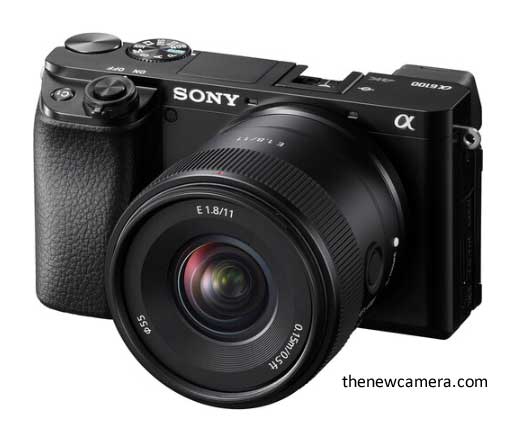
Best Ultra-Wide Vlogging Lens for Travel Vloggers
1. Sony 11mm f/1.8
- Specs: 11mm focal length (16.5mm equivalent), f/1.8 aperture, 181g, no OSS, 55mm filter.
- Price: ~$550 (Check Price at B&H Store and Amazon.com).
Sony 11mm f/1.8 is the best lens for Sony ZV-E10 vloggers, those who need maximum coverage of the frame. The 11mm lens is highly required, which will act as a 16.5mm lens in 35mm format, making it very ideal for handheld vlogs and for dramatic indoor and landscape. The Sony silent dual linear autofocus motor always keeps tracking the subject without any issue. The lens is very lightweight with 181 grams and pairs up perfectly for ZV-E10 and handheld vlog shooting.
- Pros:
- Ultra-wide for maximum scene coverage.
- Fast f/1.8 aperture for low-light and bokeh.
- Lightweight and weather-sealed.
- Cons:
- No optical stabilization (use ZV-E10’s digital IS).
- Some edge distortion (correctable in post).
Best For: Vloggers needing wide coverage, travel creators, and architecture photographers.

Now, if you want a super-low-light-sensitive ultra-wide lens, then we have the Viltrox 13mm F1.4
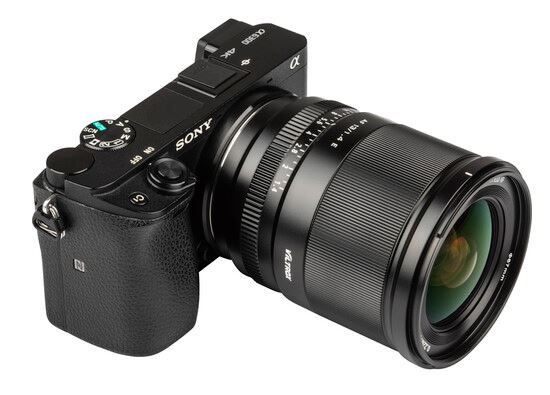
2. Viltrox 13mm F1.4 Lens: The Viltrox 13mm F1.4: If you are a content creator who creates most of your videos in an office or home setting, then you should consider the 16mm F1.4 lens. However, if you want extra coverage of your surroundings, for example, if you want a super-wide view or if you want to capture everything around you, especially for travel bloggers who want a bit more coverage than normal, then in that specific situation, I would suggest you go with the Viltrox 13mm F1.4 lens for the E-mount.
In terms of build quality, the lens is made up of a solid metal casing and has multiple weather seals, which makes it perfect to carry around in adverse weather conditions. The cherry on top is that you get a large manual focus ring which you can easily use to provide a smooth focusing experience. You can also do manual override while using autofocus.
The lens features an F1.4 aperture which makes it an ideal ultra-wide-angle prime lens to capture videos and even images in extremely low light conditions. The lens can also be used for astrophotography due to the nature of its high-grade optics.
A lot of effort has been put into optimizing this lens to perform perfectly while shooting videos. The lens features an STM motor, also known as a stepping drive motor, which helps to focus quickly without creating any noise.
Check the Latest Price of Viltrox 13mm F1.4 lens at Amazon | B&H Store
Pros:
- Impressive performance
- Solid metal casing
- Good handling
- Fast and accurate autofocus
- Affordable
Cons:
- No AF/MF focus mode switch
If you are a travel blogger and want to have super-wide coverage with a 13mm lens, you can go with this one
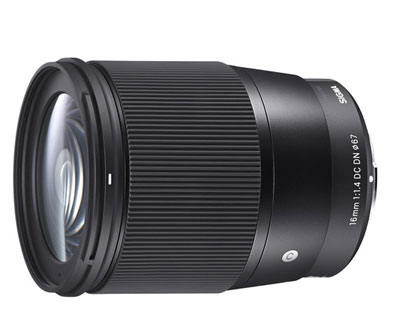
3. Sigma 16mm f/1.4 is a top choice for vlogging with a slightly tighter frame than the Sony 11mm.. The prime is designed for APS-C-format Sony E-mount mirrorless cameras and provides a 24mm equivalent focal length. A perfect focal length for creating content by putting ur camera just 2 to 3 feet away, and yes u can sometimes do handheld vlogs too.
The best part of the lens is the F1.4 aperture. Bright f/1.4 maximum aperture excels in low-light conditions. Shooting at Night and creating nightlife vlogs is now very easy with F1.4 aperture. And as usual, it also affords increased control over depth of field for achieving selective focus effects.
The AF is very fast, and the Sigma uses a stepping AF motor optimized for both photographers and videographers with its fast, precise, and near-silent performance.
The lens is an amazing bargain – super sharp, very fast, beautiful bokeh, and auto-focus. There is pretty much nothing not to like. The construction is rock solid, and rubber sealing is incorporated in the mount design to render it dust- and splash-resistant.
- Pros:
- Sharp at f/1.4.
- Compact for a fast prime.
- Affordable for the performance.
- Cons:
- No optical stabilization (use ZV-E10’s digital IS).
- Slightly heavy for long handheld shoots.
- Best For: Vloggers, low-light shooters, and travel creators.
- Price of Sigma 16mm F1.4 – Buy this lens from Amazon.com | B&H Store
Sample: View sample vlog shot with Sigma 16mm.
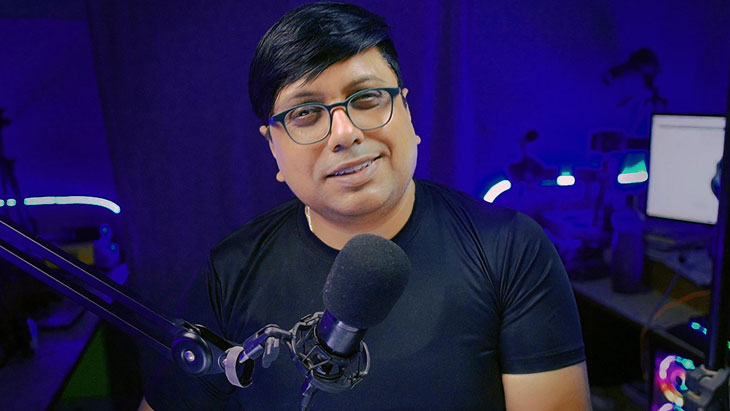
The Sigma 16mm F1.4 lens is an excellent companion for the Sony ZV-E10 Camera, specifically when you want to keep the camera very close to you, the lens genrates the best output.
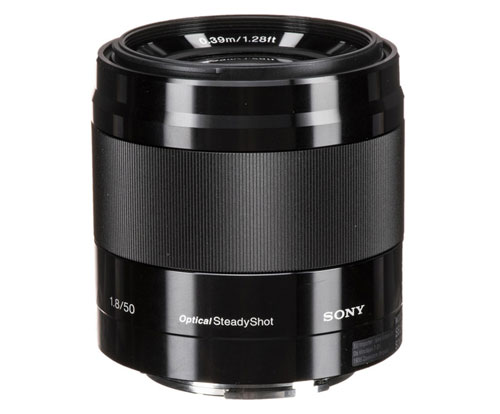
4. Best Budget portrait Prime Lens for Sony ZV-E10 – Sony 50mm F1.8 – The best portrait prime lens ever made for Sony APS-C Mirrorless cameras. The lens features Optical SteadyShot image stabilization, so you can get sharper imagery when shooting handheld with slower shutter speeds. The OSS helps really a lot while shooting in low-ligh conditions.
One of the only portrait prime lens that features built-in OSS
An internal focus mechanism is really fast and responsive, with a minimum focus distance of 1.3′, and easier handling as the lens does not change in length during use. So, you can use this lens very easily with gimbals also.
The only downside, this lens isn’t weather-sealed, but also keep in mind the lens is made for an APS-C Mirrorless camera and not a Full frame camera. If you use it with a camera like Sony A7 III, the camera will work in DX mode and you will get a 10MP file.
Best zoom lens for Sony ZV-E10
Now here is the list of Best Zoom Lenses for the Sony ZV-E10 camera, that will help you extract the best possible output from ZV-E10’s 24MP BSI CMOS sensor.
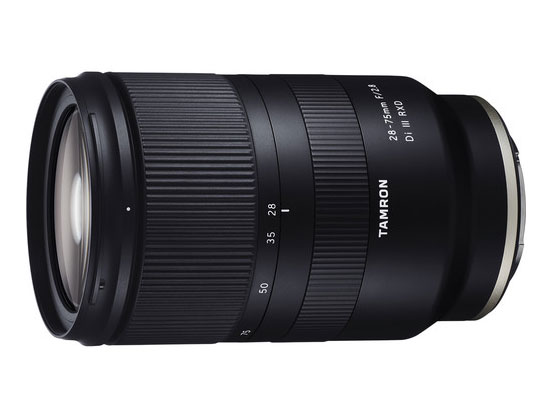
1. Tamron 17-70mm F2.8 RXD – At $799 you are getting a pro lens, Tamron 17-70mm f/2.8 Di III-A VC RXD is a 25.5-105mm-equivalent lens for APS-C-format Sony E-mount mirrorless cameras. It’s an engineering masterpiece, incredibly versatile everyday zoom ideal for everyday shooting, and the fast f/2.8 constant maximum aperture suits working in difficult lighting conditions and offer improved control over depth of field. This lens delivers outstanding image quality even when shooting wide open, it is beautifully sharp throughout the frame.
The lens features built-in IS, which helps you to shoot with slower shutter speeds in low-light conditions without adding any motion blur or camera shake to your image. Altought the F2.8 aperture helps a lot while shooting in low-light.
Autofocus is very fast, accurate, and silent. For video users, there is almost no focus breathing throughout the range and focus pulls look incredible. VC of course makes handheld shots very smooth. And the controls on the lens are very smooth and do allow you to rather cleanly zoom in and out.
Buy Tamron 17-70mm F2.8 Lens fro m Amazon.com | B&H Store
This lens is awesome. For many shooters and videographers, this could be a one-and-done lens. The only downside, there are no physical controls on this lens for stabilization or focus modes, so you’ll have to change them through the menu system in your camera.
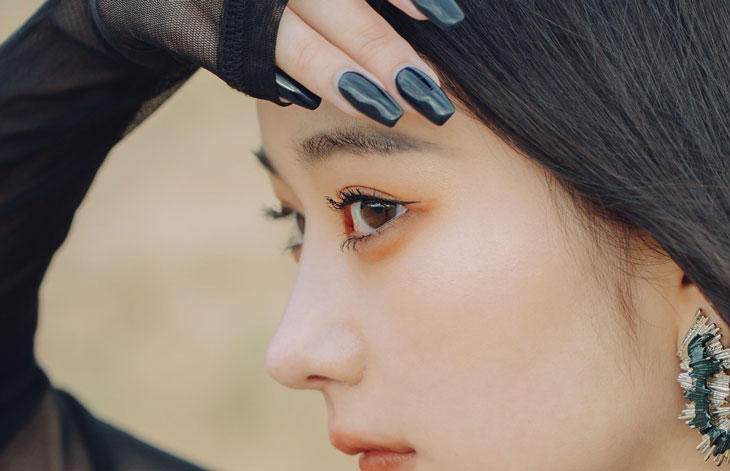
Now let’s talk about a lens with an extra wide coverage and a constant F2.8 aperture
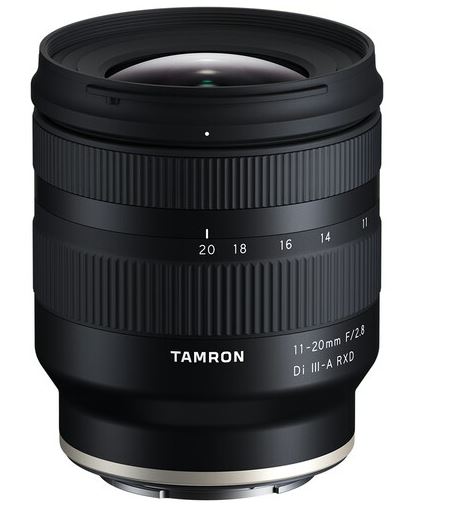
2. The Tamron 11-20mm F2.8 is an APS-C lens with a constant F2.8 aperture. This lens is designed for content creators, covering a vital range from 11mm to 20mm. It can go super wide and then up to a normal wide mode which is 20mm. So, if you want to cover the entire environment, you can adjust the lens up to 11mm and depending on your set of requirements and taste, you can adjust its focal length. It’s not a prime lens, so you don’t have to worry about buying a 13mm lens or 16mm lens. It covers from 11mm to 20mm with a constant F2.8 aperture and is built with RXD motors, so the autofocus is super fast and silent.
The lens features a steel construction and lightweight design, so you don’t have to worry about handling it for a long time. You can also use this lens in adverse weather conditions.
rock-solid in the hands and features a dust- and splash-resistant design. An excellent lens for outdoors.
Quick Guide
| Lens Name |
OIS |
Weight |
Price |
Best Use Case |
| Sony E 11mm f/1.8 |
No |
181g |
$550 |
Lightweight / Vlogging/Wide Coverage |
| Viltrox AF 13mm f/1.4 |
No |
420g |
$430 |
Low-Light Vlogging / Wide Coverage |
| Sigma 16mm f/1.4 |
No |
405g |
$400 |
Vlogging/Low-Light |
| Sony E 35mm f/1.8 |
Yes |
54g |
$450 |
Portraits/Street |
| Tamron 17-70mm f/2.8 |
Yes |
525g |
$800 |
All-Purpose/Travel / Wedding / Event |
| Sony E PZ 10-20mm f/4 |
No |
178g |
$750 |
Wide-Angle Vlogs |
| Sony E 50mm f/1.8 |
Yes |
202g |
$300 |
Portraits/Budget |
| Tamron 11-20mm f/2.8 |
No |
335g |
$500 |
Budget Vlogging / Street Food / Travel |

Best Macro Lens
Sony FE 50mm F2.8 Macro G OSS is designed for full-frame E-mount cameras, this telephoto macro can also be used on APS-C systems, where it provides a 75mm equivalent focal length. The lens is affordable and perfect for APS-C Mirrorless cameras, this is a true 1:1 Macro Lens so you will be getting life-size images from the lens. Later on, once you have upgraded you can use this lens on the A7 series camera too.
Get 50mm F2.8 Macro Lens from Amazon.com | B&H Store
The true macro design affords a life-size, 1:1 magnification ratio along with a 6.3″ minimum focusing distance for working with close-up subjects. A focusing distance and magnification scale are also printed on the top of the lens to aid in more technical applications.
One extra-low dispersion element is featured in the lens design and helps to reduce chromatic aberrations and color fringing for improved clarity and color neutrality.
Best telephoto zoom
One of the best investments for APS-C users, it is a full-frame Tamron 70-180mm F2.8 VXD G2 lens so you will get a 105-270mm equivalent focal length range. The best lens when you do have some flans of getting a Sony full-frame camera.sue to fast aperture and being a full-frame lens the overall quality of this lens is just amazing.
Bright constant f/2.8 maximum aperture affords consistent brightness throughout the zoom range and offers improved control over depth of field. Two VXD (Voice-coil eXtreme-torque Drive) linear motors deliver impressively quiet, quick, and precise focusing performance to suit both stills and video applications. This focusing system offers a minimum focusing distance of 2.8′ at all focal lengths, and a 1:4.6 maximum magnification at the 180mm focal length for working with close-up subjects. Full-time manual focus override is also possible, and it is compatible with Sony’s Direct Manual Focus function or fine-tuned manual control.
We highly recommend you tet the Tamron 70-180mm lens, so will get max output from your camera, and later on ,you can use this lens for your future full-frame cameras.
How to choose the right lens for your Sony ZV-E10 camera?
See choosing the right lens actually depends on one’s shooting style, the set of requirements you have and your budget. All these factors decide the best lens for you.
1. Finding out the right focal length
Ultra wide lenses (10-15mm)
The lenses falling in the range of 10 to 15 mm are the best lenses for vlogging. These lenses provide maximum coverage even in tight spaces and some of the examples are Sony 11 mm f/1.8 and the Viltrox 13mm f/1.4.
Wide Angle lenses from 16 to 20 mm
16 to 20 mm lenses are highly suitable for desk vlogs. When you want to keep your camera really close to yourself, just after the screen of your desktop, then having lenses like Sigma 16 mm f/1.4 is really usable. Occasionally, you can also do handheld vlogging.
Standard lenses from 24 to 50 mm
The standard lenses need a good working distance from the subject. So, if you are sitting in a room or office and your camera is at a good distance from you, then you can use lenses like 35 mm from Viltrox or Sony, or a 56 mm lens from Sigma, or a 50 mm lens from Sony—any of these. So it all depends on how far you’re sitting from your camera.
Telephoto / Zoom lenses 70 mm+
If you are interested in sports and wildlife—which is really very less common with ZV-E10 users—then you have to invest in 70 mm+ lenses. Otherwise, most of the work can be done easily with lenses below this focal length.
2. Aperture
Fast aperture lenses with f/1.4 to 2.8 range
For better low light performance and shallow depth of field, you will need lenses with bright or max aperture value f/1.4—like we have the Viltrox 13 mm f/1.4 or the Sigma 16 mm f/1.4. Now just after that, we have f/1.8 lenses like the Sony 11 mm f/1.8.
Slower aperture f/4+ focal length
The f/4 or f/4+ lenses are more budget friendly but less effective in low light scenarios.
3. Optical Image Stabilization (OIS)
Since the camera does not have any sensor-shift image stabilization, it’s very important to select lenses with OIS (Optical Image Stabilization) if available. Otherwise, you have to use your camera on a gimbal to get highly stable output. Aur as a content creator, you can also use the camera’s gyro-based image stabilization, which is very effective.
4. Budget-friendly lenses
Under $500 lenses: If you are really looking for budget-friendly lenses, then I will recommend you to get Viltrox Air Series lenses. Even some lenses that we have recommended here like 50 mm f/1.8, Viltrox 30 mm f/1.4 and Tamron 11-20mm f/2.8 are some budget-friendly lenses.
Budget range $500 to $1000: Higher priced lenses include Sony 11 mm f/1.8 and Tamron 17-70 mm f/2.8.
Practical tips
Vlogging with coverage: Choose an extra wide-angle lens while you are vlogging, like Sony 11 mm or at least Viltrox 13 mm. With the extra coverage, you can easily apply Active IS stabilization that will do a digital fine crop. As well as, you can also apply gyro-based image stabilization. These extra wide-angle lenses help a lot when you want to implement digital zoom in your camera or in your software.
Low light vlogging: Ultra-bright lenses like—for vlogging purpose—you can have the Viltrox 13 mm f/1.4 or you can also have the Sigma 16 mm f/1.4. When you are shooting in your room or in your bedroom, these f/1.4 lenses are really very helpful when you are shooting in available light.
Portraits: For getting excellent results, I will highly recommend you to get 50 mm f/1.8 or 56 mm f/1.4 lens.
Travel Lens: The Tamron 17-70 mm covers most of the scenarios.
FAQ
What is the best lens for Sony ZV-E10 vlogging?
The Sony 11 mm f/1.8 is our top pick for vlogging. The lens covers an ultra-wide range of 16.5 mm in terms of full-frame equivalence. A perfect lens that covers the entire environment along with you, and also helps you to implement Active IS without any significant loss of frame. The second-best alternative to 11 mm f/1.8 is the Viltrox 13 mm f/1.4 which actually shines with its ultra-bright f/1.4 aperture—best for low-light scenarios.
Can I use full-frame lenses on the Sony ZV-E10?
You can use Sony E-mount full-frame lenses, as those are compatible with the ZV-E10 camera, but as we all know, the Sony ZV-E10 uses an APS-C CMOS sensor. For example, a 24mm lens will act as a 36mm lens on your camera, and the advantage of getting a crop lens is the size of the lens, like we have the Viltrox 13mm f/1.4, which is lighter as well as cheaper in its category.
What’s the best budget lens for Sony ZV-E10?
The Sony 50mm f/1.8 is the best budget lens for capturing portraits. The next best lens to it is the Viltrox Air 35mm f/1.8. Such lenses are lighter and cheaper for the ZV-E10 camera.
Do I need stabilisation for ZV-E10 in lenses?
Stabilisation, either mechanical or electronic, is needed for handheld vlogging. Now, if you are using a gimbal, which of course makes your setup a bit heavy, then you are getting very clean and smooth footage. But if you are not using any gimbal, then it’s highly recommended to use either Active Image Stabilisation mode inside your camera or completely turn off all the in-camera modes and later stabilise your footage in the Catalyst Browse software provided free by Sony.
Which is the best lens for low-light photography or vlogging?
The Viltrox 13mm f/1.4 is the best or the top choice for low light. These lenses maximise light capture and create a very creamy background blur. So, for available light, these two are the best lenses. Now, if you want a lightweight solution that’s easy to carry all the time, then with a bit of sacrifice, you can have the Sony 11mm f/1.8.
Are third-party lenses like Viltrox or Sigma good for the Sony ZV-E10?
Yes, third-party lenses like Viltrox and Sigma or even Tamron have the same autofocus algorithm inside them, which is being provided by Sony itself to the third-party lens makers. And the best part is that they give the best performance at lower prices. Like we have the Viltrox 13mm f/1.4 and the Sigma 16mm f/1.4, which are prime examples of lenses offering the surface-level optics with fast autofocus and great value for content creators and vloggers.
ABout the author: The article “Best Lenses for Sony ZV-E10 in 2025: Top Picks for Vlogging & Photography” written and updated by thenewcamera.com team on 5:50 am Monday, 5 May 2025 Greenwich Mean Time (GMT) | Follow us for more updates and Get LIVE RUMORS –> FACEBOOK | TWITTER | INSTAGRAM to get live news — > –>see more Sony Alpha Rumor


